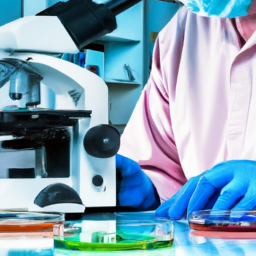In recent research, scientists have made significant strides in understanding how polymyxins, a class of last-resort antibiotics, dismantle the protective barriers of bacteria. This groundbreaking discovery sheds light on the mechanisms by which these antibiotics operate, revealing that they compel bacterial cells to overproduce and subsequently shed their defensive structures. This insight could have profound implications for treating persistent infections, as it highlights the limitations of current antibiotic strategies and opens new avenues for future therapies. Polymyxins, particularly polymyxin B and colistin, are often employed when other antibiotics fail, primarily due to their ability to target Gram-negative bacteria, which are notorious for their robust outer membranes. These membranes serve as a formidable barrier against many antibiotics, making infections caused by these bacteria particularly challenging to treat. In my experience, the increasing prevalence of antibiotic-resistant strains has underscored the urgent need for effective treatments, and this research provides a promising glimpse into how we might enhance our arsenal against such pathogens. The study reveals that polymyxins exert their effects primarily on active bacterial cells, leaving dormant or inactive cells largely unaffected. This finding is crucial because it may explain why some infections recur even after treatment. Dormant bacteria can evade the action of antibiotics, leading to a resurgence of the infection once the antibiotic treatment is completed. Research confirms that when bacteria are in a dormant state, they do not respond to polymyxins, which raises important questions about how to effectively manage and eradicate infections caused by these resilient organisms. Experts agree that understanding the dynamics of bacterial dormancy and activity is essential for developing new treatment strategies. For instance, one potential approach could involve waking up dormant bacteria before administering antibiotics, thereby increasing the likelihood that the treatment will be effective. This concept aligns with findings from peer-reviewed research indicating that certain environmental factors or chemical agents can stimulate bacterial activity, making them more susceptible to antibiotics. The implications of this research extend beyond the laboratory. According to official reports from health organizations, antibiotic resistance is a growing global health crisis, with millions of infections each year becoming harder to treat. The World Health Organization has identified antibiotic resistance as one of the top ten global public health threats. Therefore, understanding how polymyxins function at a molecular level could lead to innovative strategies that not only enhance the efficacy of existing antibiotics but also help in the development of new ones. Furthermore, the study highlights the importance of ongoing research into the mechanisms of antibiotic action and resistance. Industry experts note that as bacteria evolve and develop new resistance mechanisms, it is critical to stay ahead of these changes through rigorous scientific inquiry. This includes investigating alternative therapeutic approaches, such as bacteriophage therapy or the use of antimicrobial peptides, which may work synergistically with traditional antibiotics to combat resistant infections. In addition to the potential for new treatment strategies, the findings also raise important questions about the use of polymyxins in clinical settings. While these antibiotics are invaluable in treating severe infections, their use is often accompanied by concerns about toxicity and the potential for further resistance development. Regulatory agencies report that the overuse of polymyxins can lead to the emergence of resistant bacterial strains, which could render these last-resort antibiotics ineffective in the future. Therefore, a balanced approach to antibiotic stewardship is essential, ensuring that these powerful drugs are used judiciously and only when necessary. As observed in clinical practice, the challenge of treating bacterial infections is compounded by the complex interplay between bacterial behavior and antibiotic efficacy. The discovery that polymyxins primarily target active cells suggests that treatment regimens may need to be tailored to account for the activity status of the bacterial population. This could involve combining antibiotics with agents that stimulate bacterial activity or employing novel delivery methods that enhance the penetration of antibiotics into biofilms, where dormant bacteria often reside. Looking ahead, the implications of this research are significant. Experts predict that as we deepen our understanding of bacterial defenses and the mechanisms of antibiotic action, we will be better equipped to tackle the challenges posed by antibiotic-resistant infections. This could lead to the development of more effective treatment protocols, ultimately improving patient outcomes and reducing the burden of infectious diseases. In conclusion, the recent findings on how polymyxins disrupt bacterial defenses represent a pivotal advancement in our understanding of antibiotic action. By revealing that these antibiotics primarily target active cells, the research opens new avenues for addressing the persistent challenge of bacterial infections. As we continue to grapple with the threat of antibiotic resistance, it is imperative that we invest in further research to explore innovative treatment strategies and enhance our ability to combat these formidable pathogens. The future of antibiotic therapy may well depend on our ability to adapt and respond to the evolving landscape of bacterial resistance.
TRENDING NOW
WORLD
Global Messaging Trends: Can Local Apps Like Arattai Overtake Giants?
44% 🔥
POLITICS
Accusations fly over whether Republicans or Democrats 'own' shutdown
35% 🔥
POLITICS
Rep. Mike Haridopolos, R-Fla., talks about the government shutdown
34% 🔥
POLITICS
What happens now that the government has shut down. And, a pricing deal with Pfi...
26% 🔥
POLITICS
Married, but no connection: Reality of silent divorces in Indian homes
31% 🔥
POLITICS
Netanyahu's apology to Qatar, phone on Trump's lap: A telling White House photo
38% 🔥
MOST READ
SPORTS
Week 5 NFL odds, lines, betting picks, spreads: 2025 predictions: Model backs Sa...
55% 🔥
SPORTS
Predicting every undefeated college football team's first loss: Will anyone beat...
36% 🔥
SPORTS
Tigers Lefty Tarik Skubal Deserves Second Straight AL Cy Young Award
54% 🔥
SPORTS
Jets Get Official Braelon Allen Injury Diagnosis
61% 🔥
SPORTS
Gill: India won't be 'looking for any easy options' against West Indies
49% 🔥
SPORTS
Phil Mickelson takes a jibe at golf during friendly banter with ex-LIV Golf CEO’...
39% 🔥

